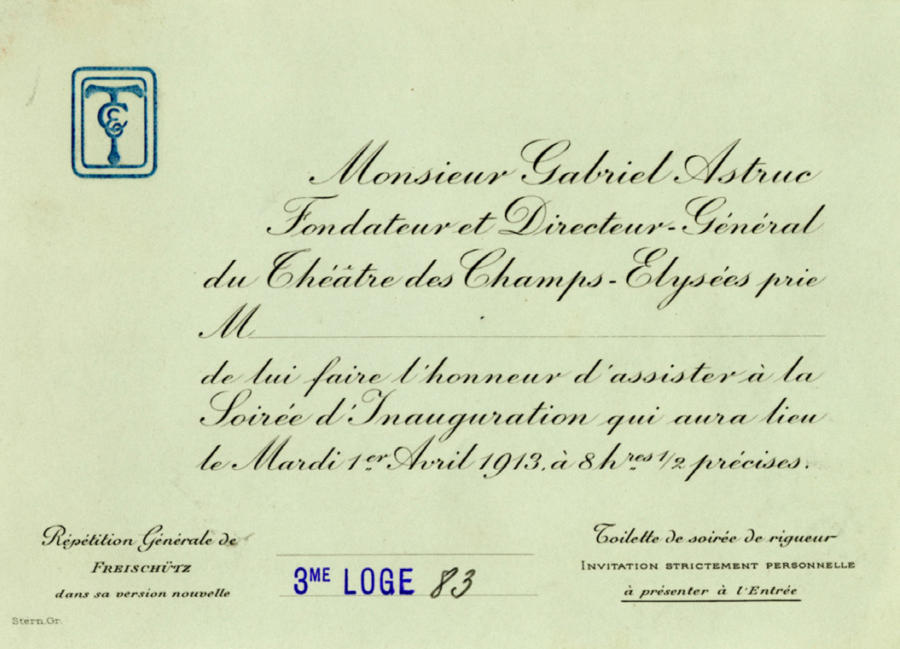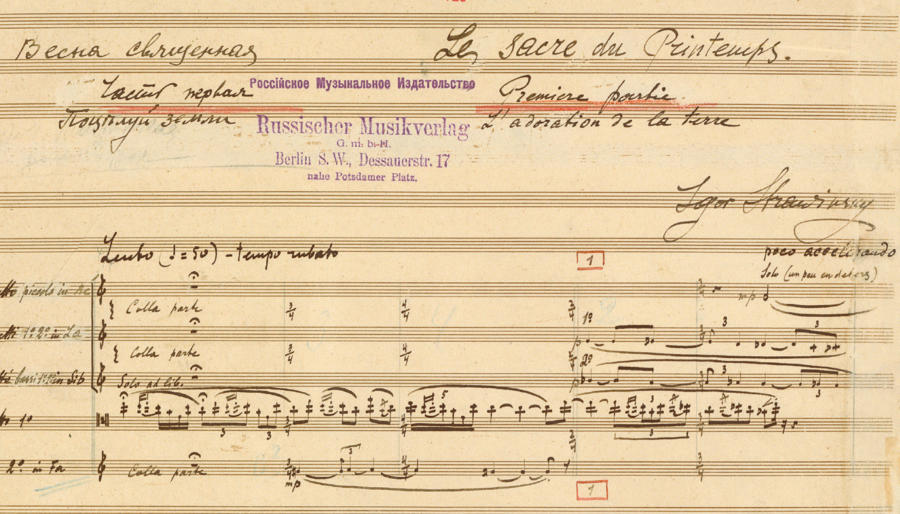LAN will soon be unveiling its next project, sited on Avenue Montaigne in Paris. Meanwhile, let us share with you the history of one of the emblematic buildings that sits close by: the Théâtre des Champs-Élysées.
The history of the Théâtre des Champs-Elysées dates back to 1906, when the impresario and music publisher, Gabriel Astruc, embarked on a project to build a theatre in Paris dedicated to music.
The Perret Brothers would finally be chosen to build it. First selected as entrepreneurs (they were at the time specialists in the brand-new process of reinforced concrete), they would ultimately play a predominant role in the construction of the building.
Upon its inauguration on 31 March 1913, the theatre was surprising in its modernity, with its electrified stage lifts, the comfort of the boxes, the elegant curves of the balconies... but also in its artistic programming with, for the first time, a venue in which it was possible to present in the same theatre opera, symphony concerts, recitals and ballets, as well as providing a perfect backdrop for the dramatic arts.
Some months later, Astruc was declared bankrupt. World War I put on hold this place of culture, which would remain dormant until the
1920s, a period that would be among the most exciting in the history of the theatre. Over the years, a whole generation of composers would grace its halls: Milhaud, Poulenc, Satie; along with artists: Léger, Picabia; and intellectuals: Cocteau, Claudel, Cendrars. In 1925, and for the first time in Paris, Josephine Baker played here.
The theatre then changed its name to become the "Théâtre Music-Hall". Three seasons were exclusively dedicated to the music hall repertoire, before a more classical programme resumed, to herald the start of the prestige recital tradition, still anchored in the life of the Theatre today.
Between the autumn of 1941 and spring 1944, it was the turn of the Grand Orchestre de Radio-Paris to take up residence at the Theatre, where it would give no less than 310 radio broadcast concerts, 115 of them in public. The National Orchestra, which adopted the name of "National Radio Orchestra", was installed as permanent resident in the Theatre.
Between 1976 and 1990, variety reached its apogee with symphony concerts, ballets and chamber music soirées alternating on its stage.
Then, in 1985, a major refurbishment campaign was undertaken. After work lasting more than one year, the theatre reopened in September 1987 with Benvenuto Cellini by Berlioz, the work that had marked its inauguration in 1913.
More than a century has passed, and this theatre with so many eventful years behind it is far from running out of steam.
















